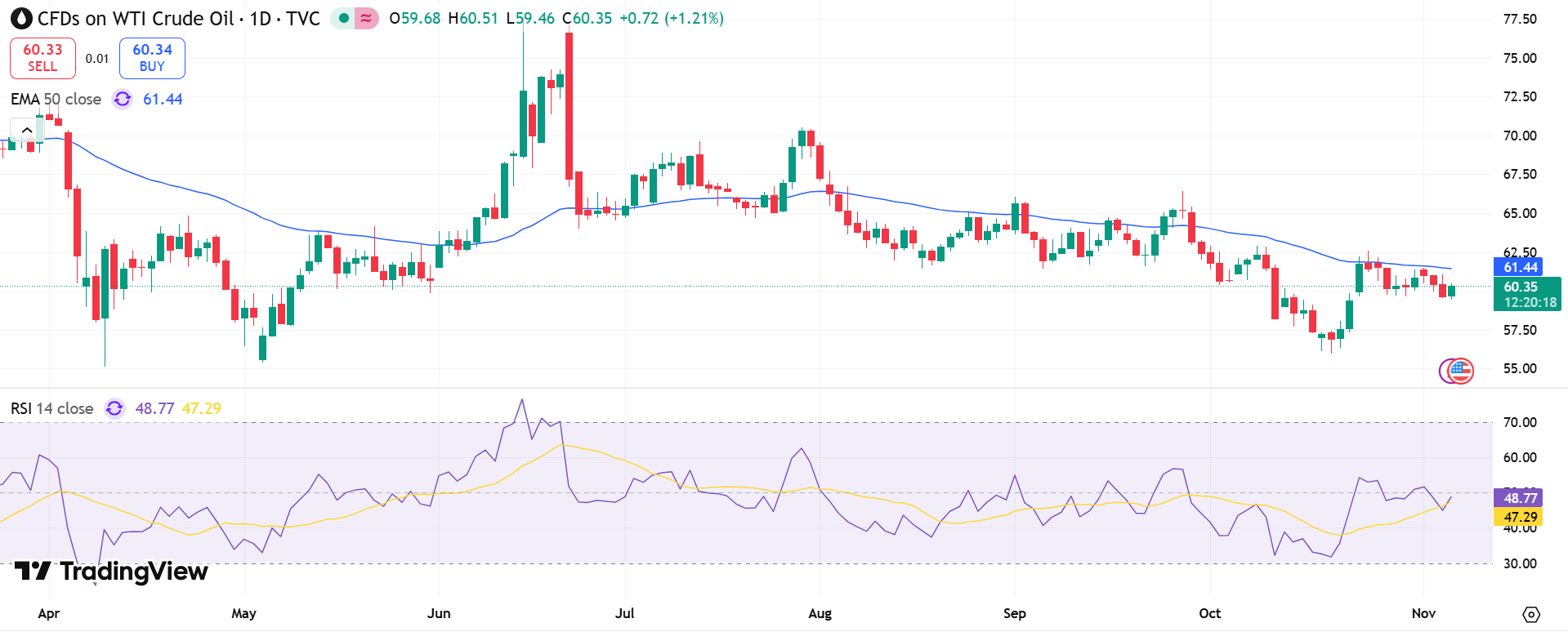Oil prices gained modestly on Thursday, reversing part of their recent slide, as easing oversupply concerns offset lingering demand weakness. The market found support from signals that OPEC+ would curb further production growth early next year, helping stabilize prices after weeks of volatility.
Brent crude futures rose $0.24, or 0.38%, to $63.76 a barrel, while U.S. West Texas Intermediate (WTI) gained $0.25, or 0.42%, to $59.85 by 07:53 GMT. The modest rebound followed a two-week low on Wednesday, extending a cautious recovery for global energy markets.
According to Haitong Securities, sentiment improved after U.S. and U.K. sanctions on major Russian oil companies earlier this month tempered fears of excessive supply. A potential OPEC+ decision to pause additional output in Q1 2026 also helped calm bearish pressure.
Still, concerns about weaker demand continue to weigh on the market outlook.
Demand Weakness Limits Price Momentum
Despite recent geopolitical disruptions, oil demand growth remains below expectations. Data through November 4 shows global demand rising by 850,000 barrels per day (bpd)—short of J.P. Morgan’s earlier projection of 900,000 bpd.
The bank’s report noted that U.S. oil consumption remains subdued, with weak travel demand and slower shipping activity dragging on fuel usage.
Key market highlights:
- U.S. crude inventories rose 5.2 million barrels to 421.2 million, far exceeding expectations for a 603,000-barrel increase, according to the Energy Information Administration (EIA).
- Global fuel demand indicators show limited improvement despite seasonal upticks.
- Transportation and industrial fuel usage remain well below 2023 averages.
Analysts at Capital Economics warned that downside risks persist, forecasting an average of $60 per barrel by end-2025 and $50 per barrel by end-2026, citing “continued demand headwinds and resilient supply.”
OPEC+ Strategy and Market Outlook
Saudi Arabia, the world’s largest crude exporter, recently cut December selling prices for Asian buyers, reflecting its response to an oversupplied market. The decision underscores the delicate balance OPEC+ faces between maintaining market share and preventing a price collapse.

While the cartel’s planned output pause could provide short-term support, traders remain cautious. With U.S. stockpiles rising and global consumption slowing, the market’s recovery appears fragile.
In the near term, analysts expect oil to trade within a narrow range, influenced by:
- OPEC+ production discipline
- China’s demand recovery pace
- U.S. inventory data trends
As the year-end approaches, the balance between supply restraint and demand recovery will be critical in determining whether oil can sustain prices above the $60 mark.


